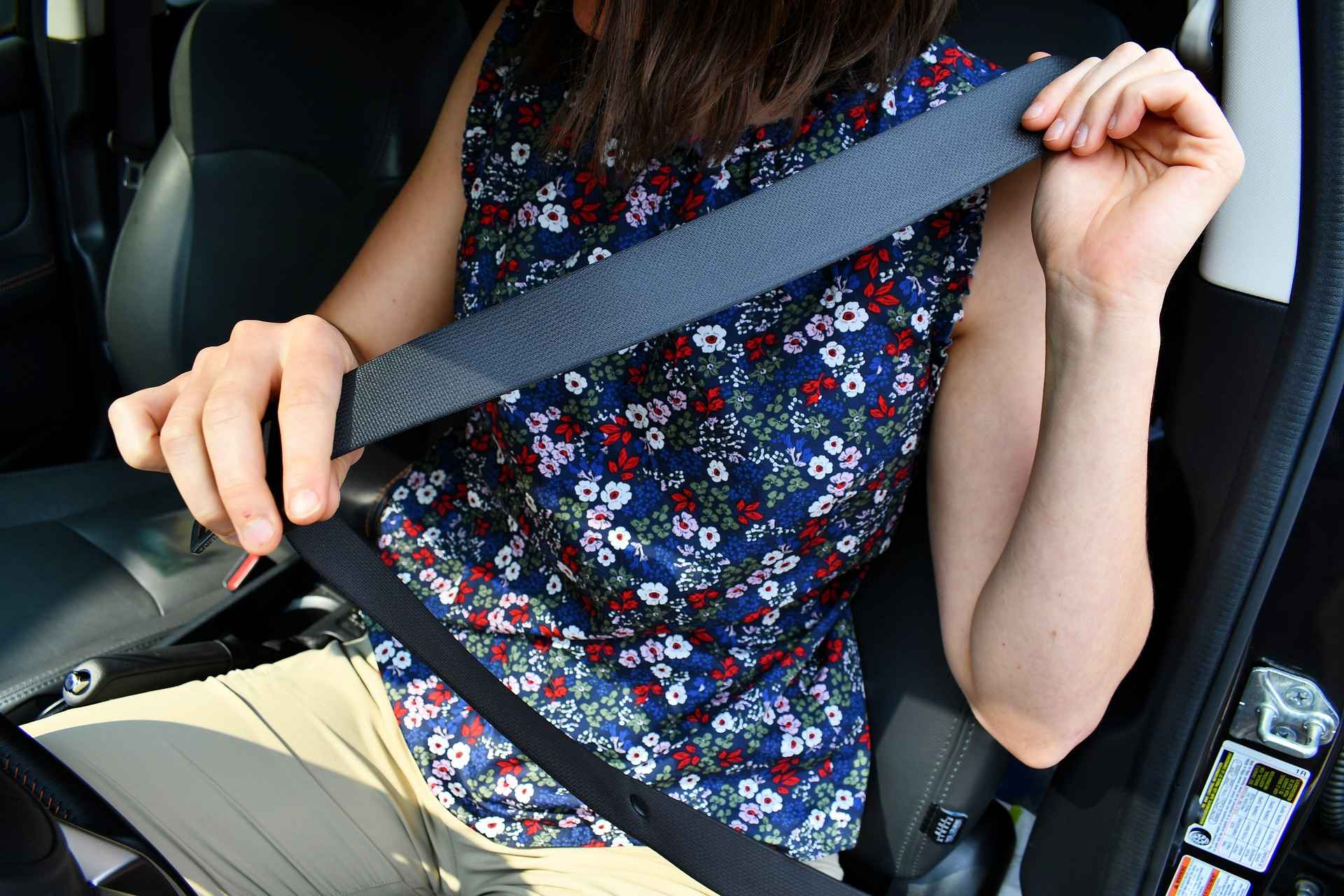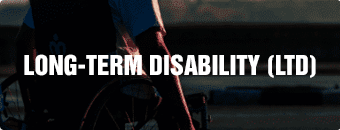- Our Firm
- Personal Injury
-
-
-
Personal Injury Lawyers
-
-
-
-
-
-
Injured in an accident? At Diamond & Diamond, our team of lawyers rely on their reputation in the field and extensive experience in personal injury to provide clients with a dedicated support system over the duration of their case.
-
-
-
-
-
HAVE YOU RECENTLY BEEN INJURED IN AN ACCIDENT?
-
-
-
- Real Estate
- Corporate
- Class Action

Buckling Up for Life: The Importance of Seat Belt Wear for Maximum Safety
To ensure maximum safety, there’s been a push for wearing seat belts, as studies have consistently shown that they save lives. As of 2021, reports show that 28.6 percent of driver and 35.6 percent of passenger fatalities have happened because of not wearing seat belts.
All Canadian seat belt laws are primary enforcement laws, which means that not wearing a seat belt is enough for the police to pull you over and issue a citation. The typical penalty for not wearing a seat belt is a fine, demerit points, or both. Ontario’s fine is between $200 to $1,000 and two demerits.
Before seat belt laws came into effect, most people in Canada didn’t wear them. For example, only 28 percent of Albertans wore seat belts in 1987, when seat belts became mandatory. The latest information indicates that 90 percent or more people use seat belts across Canada, including Alberta (92 percent). The highest percentage was in British Columbia (96.9%), while the lowest was in Yukon (78.1 percent).
|
Key Takeaways
|
Seat Belt Safety Statistics
A comparison of vehicle safety technologies from 1960 to 2012 showed that newer measures also help keep people safe. However, seat belts continue to save more lives than all other safety measures combined. The standard three-point seatbelt we take for granted today is a result of these studies. Data from The National Highway Traffic Safety Administration (NHTSA) provides more or less the same information.
The following statistics show just how important seat belts are in Canada:
- Accidents were the leading cause of death in Canada for ages 15 to 24 in 2020.
- Front-seat passengers using seat belts reduce the risk of a fatal injury by 47 percent and moderate to critical injury by 52 percent.
- British Columbia has the highest rate of seatbelt use (96.9 percent), followed by Saskatchewan (96.8 percent), Ontario (96 percent), and Quebec (96 percent).
- Ontario had the lowest fatality rate per 100,000 population (3.8) in 2021, Prince Edward Island had the highest (10.5).
- More people died in motor vehicle accidents in rural (54 percent) than in urban (44.67 percent) areas. On the other hand, more people sustained personal injuries in urban areas (72.5 percent) than in rural areas (25.1 percent).
- Fewer pickup and light truck drivers and passengers (92 percent) use seat belts than those in minivans, cars, and SUVs (95.3 percent national average).
- Significantly fewer back-seat passengers (89.2 percent) buckle up than those in front (95.5 percent).
- Female drivers wear seat belts (96 percent) men (94.3 percent).
- Travel restrictions during the pandemic resulted in an increase in unrestrained fatalities (from 41 to 70 percent) in speed-related accidents.
These statistics prove how important seat belts are for ensuring maximum safety. A substantial number of people would be alive today if they had been wearing seat belts at the time of their car accident.
Why should you use seat belts?
Most Canadians accept that they should wear seat belts because it’s an offence not to. However, they might not know why we have seat belt laws.
Numerous global and Canadian studies have consistently found that seat belts can save lives. According to Transport Canada, seat belts save approximately 1,000 lives annually in Canada.
While seat belt use is widespread, about 3 to 21 percent of individuals don’t wear them, depending on the province. About 40 percent of those who died in passenger car accidents weren’t wearing seatbelts.
Canadian law enforcement considers failing to wear a seat belt as one of the leading causes of death on the road. About a third (29.4 percent) of driver fatalities and 10.8 percent of serious injuries were due to not buckling up in 2018. Unbuckled car occupants are more likely to die (32.1 percent) or get seriously hurt (18.4 percent). Other contributing factors include impaired driving, distracted driving, and aggressive driving.
Seat belts have the following benefits:
- They keep you from being expelled in motor vehicle crashes.
- They shield you from the significant force when an airbag deploys, which can cause severe injuries if you’re not restrained by a seat belt.
- They keep passengers safe in a potentially fatal crash.
- They help to prevent increases in car insurance premiums.
Instead of using public transportation, most Canadians drive to work. About 73.8 percent of Ontarians took a car, van, or truck to work in 2022. Therefore, wearing a seat belt to ensure maximum safety is very important.
Seat Belt History
British engineer, George Cayley of Yorkshire, invented and pioneered many things, including the seat belt. He developed what was essentially a strap to keep pilots secure in gliders.
The transition to passenger vehicles happened in 1885, with a design patented by American engineer, Edward J. Claghorn. The seat belt then debuted in 1922 during the Indy 500. However, these seat belts were mainly straps worn across the lap that didn’t adequately protect the torso.
The three-point seat belt that we use today came out in 1959 and was perfected by Volvo engineer, Nils Bohlin. Bohlin received a patent in 1962, and his design had one strap across the hip and one across the torso, which secured the person at three points.
Before Bohlin received the patent, Wisconsin passed the first official seat belt law in 1961, but it wasn’t without controversy. Lawmakers argued for and against mandating seat belt use in a passenger safety versus personal choice debate.

Risk Factors for Seat Belt Wear
The latest research on attitudes and behaviours regarding seat belt wear indicates that age and disposition (driver vs. passenger) are strong indicators. Younger people (16-24) and passengers are less likely to wear seat belts while in a motor vehicle.
Time and day
A significant risk factor for seat belt wear is the time and day individuals are in a motor vehicle. More people tend to use their seat belts during daytime, resulting in fewer fatalities during daytime accidents. They also tend to use seat belts more during weekdays.
One explanation could be that since seat belts are mandatory in Canada, police officers can see if people aren’t wearing seat belts during the day. Another is that most people who travel during the weekdays and daytime are older people, who tend to wear seat belts anyway, on their way to work.
Distance, speed, and weather
While most people wear seat belts when they know they’re in for a long drive, some tend to forget to wear seat belts when they’re travelling short distances. People also tend to remember to wear seat belts on the highway and in bad weather.
Location
All Canadian provinces and territories mandate seat belt use. However, motorists in some areas are more likely to follow the law than in other areas. The seat belt use rate is highest in British Columbia and lowest in Yukon. People who live in rural areas are also less likely to wear seat belts than those in urban locations.
Age
Young people tend to think that nothing bad can happen to them and engage in risky behaviour. One of these behaviours is not wearing seat belts. Only 64 percent of people between 16 and 24 wear seat belts, compared to 83.6 percent among people 65 and older.
Do Canadians commonly drive unbuckled?
Though most Canadians wear seat belts, about 3 to 21 percent don’t, and that’s a problem. At least 1.1 million people are at risk of preventable serious injuries and fatalities. Most Canadians believe that seat belts can save lives. The ones who don’t wear seat belts often find out too late why seat belt laws are in place.
Consequences of Driving Unbuckled

Seat belts are for the safety of people in a car, and wearing them requires minimal effort. Young people might believe that they’re invincible, but that’s not true.
Of the fatalities reported in 2021, 151 were under 19. While bad weather, bad drivers, and bad roads can lead to accidents, these are beyond a driver’s control. What isn’t beyond a driver’s control is making sure that everyone in the vehicle is buckled up.
Some people, however, don’t like the seat belt strap going over their shoulders, so they put them behind their backs or under their arms. However, if you do that, the seat belt won’t work as intended in case of an accident.
For example, if you hit another vehicle at high speed, the seat belt won’t keep you from being thrown out of the windshield, which is almost always fatal. If you don’t wear a seat belt properly, it’s like you’re not wearing one at all.
Death and injury
The most concerning issue with not wearing seat belts is the death and injury of passengers and drivers. Many preventable deaths and injuries from traffic accidents happen annually because of not wearing seat belts.
In 2021, 1,768 people died and 116,203 people sustained injuries from motor vehicle accidents in Canada. About two-thirds (64.2 percent) of people who died weren’t wearing seat belts at the time of the accident.
Even if just one person isn’t wearing a seat belt, others in the vehicle can die or sustain serious injuries. This is because three different collisions happen in a car accident. Of course, the first is the vehicle when it hits another object, such as another car, a tree, or a wall. The second is humans when passengers hit things in the car. The last is internal, when the person’s internal organs, including the brain, move around.
The dynamics of a car accident are interesting. When a car suddenly stops because it hits something, everything else in the vehicle continues to move forward at the same speed. For example, If you’re travelling on a highway at 100 kph and rear-end another car, you and everything else in your vehicle continue to travel at 100 kph until something stops you. Seat belts do that in concert with airbags.
However, a person who isn’t wearing a seat belt has nothing to stop them. They may hit the back of a seat, the front windshield, or another occupant. Not only will they suffer serious injuries, but they’ll also injure everyone they hit.
When colliding with others, a 150-pound unrestrained adult can exert as much force as a 3.5-ton truck. Moreover, belted occupants are 4.8 times more at risk of injury and death with someone who isn’t wearing a seat belt during an accident.
Increased medical costs
While death is the ultimate tragedy from not wearing a seat belt, injuries can also be devastating. Unbelted car accident victims tend to have more severe injuries than those wearing a seat belt, which also means higher medical bills. The trauma of being ejected from a vehicle can have significant physical, mental, and emotional effects.
One US study compared the medical costs of restrained and unrestrained car accident victims. It indicated that unrestrained victims were 59 percent more likely to be hospitalized, and that they also needed to stay in the hospital three days longer.
The injury severity scores (ISS) for unrestrained victims were 8.28 compared to 4.44 for restrained victims. Furthermore, 20 percent more for those with an ISS of 15 or more were unrestrained victims.
As you can imagine, more extended hospital stays, high ISS scores, and requiring more intensive medical care mean higher bills. The annual cost of car accidents in Canada in 2021 was more than $25 billion. While not all the cost is attributable to unrestrained victims, a significant portion of these expenses could have been easily prevented.

Lower personal injury settlements
Canadian courts are generally skeptical in negligence claims. They have consistently reduced compensation when victims contribute to the accident.
Sometimes, they even dismiss the case, which the Supreme Court of Canada did in Galaske v O’Donnell. The plaintiff was a child who wasn’t wearing a seatbelt at the time of the accident. The child was with a parent who wasn’t the driver. The respondent’s defence was that the parent should have insisted that the child wear a seat belt.
However, most cases aren’t so drastic. Take, for example, Froom v Butcher, which is a case from 1975. Since the plaintiff wasn’t wearing a seat belt, the judge reduced the award by 20 percent, saying that they contributed to the accident.
The reduction of damages for not wearing a seat belt will depend on the case and the skill of your personal injury lawyer. However, it typically falls between 5 and 25 percent.
Unrestrained crash victims can still file personal injury lawsuits. However, they must accept that their award of damages may be reduced. They may also need to provide evidence that not using a seat belt did not contribute in any way to the injury.
Increased insurance rates
Insurance companies consider the risks they take when issuing policies to drivers. When calculating insurance rates, these companies look at any offences, including seat belt tickets.
While one seat belt ticket may not significantly impact your premium, repeated offences might. A seat belt ticket is a minor offence, typically resulting in fines and demerits on your driving record.
In Ontario, you get two demerits on your license for not wearing a seat belt. If, however, you have a full driver’s licence and get over 15 demerit points within two years, your licence will be suspended for 30 days and you’ll need to surrender your licence to the Ontario Ministry of Transportation.
Insurance companies track demerits to determine the type of tickets you get. A ticket for stunt driving or speeding may require you to go to court. If you get a conviction, your insurance rate will significantly increase.
Seat belt tickets won’t directly lead to higher premiums. However, if you get a license suspension for any reason, such as too many demerits, it may. Sometimes, insurers may even refuse to cover you for suspensions due to risky behaviour, such as impaired driving.
Seat Belt Laws
Provinces and territories have their own laws regarding the use of seat belts. Since they’re all primary enforcement laws, police are allowed to pull you over for not wearing a seat belt.
Below is a brief description of seat belt laws in Canada by province. Note that each jurisdiction provides specific exemptions.
Ontario
Seat belts date back to the 1800s. However, it was only in 1976 that the first seat belt law was passed in North America.
Section 106 of the Highway Traffic Act requires all persons 16 and older in a motor vehicle to wear a seat belt. The driver is responsible for ensuring passengers under 16 are wearing a seat belt. Moreover, it must be a three-point seat belt assembly, as specified under Section 208 (1) of the Motor Vehicle Safety Act.
Alberta
Part 5 of the Alberta Traffic Safety Act specifies that all drivers and passengers must wear a seatbelt. The driver is responsible for securing children from 6 to 15.
Drivers with learner or probationary (GDL) licenses may not have more passengers than seatbelts. Children under six, or who weigh less than 18 kgs, must be in an approved child restraint. Drivers who violate these rules may receive a $162 fine. GDL drivers get two demerit points for having more passengers than seat belts.
British Columbia
Section 220 of the Motor Vehicle Act requires everyone in a motor vehicle to wear a seat belt. The seat belt must include a pelvic restraint, upper torso restraint, or both. Persons in vehicle seats with separate pelvic and torso restraints may only use the pelvic restraint. Children under six must be in a child seat that’s also securely restrained.
The penalty for not wearing a seatbelt is $167, plus a 15 percent surcharge, for each unrestrained person in the vehicle. You’ll also be fined $311, plus victim surcharges, if you have more passengers than seat belts. If, however, you pay the fine within 30 days, your fine will be reduced by $25.
Manitoba
Section 186 of the Highway Traffic Act of Manitoba requires all drivers and passengers to wear a seat belt. Depending on the minor’s age, drivers must make sure that they’re safe in either child restraint seats or an adult seat belt assembly. They shouldn’t secure child car seats or booster seats to the vehicle with automatic seat belt assemblies.
Unrestrained drivers and passengers may be liable for a fine of up to $2,000.
New Brunswick
Section 200.1 of the Motor Vehicle Act requires all motor vehicle passengers to wear a seat belt. The vehicle can’t have more passengers than seat belts.
It’s the driver’s responsibility to make sure that passengers aged 9 to 15 are secured. Children up to 8 years old, 36 kgs, or 145 cm, must be in child safety seats.
If the driver isn’t wearing a seat belt, they may be fined $180 and get two demerit points.
Newfoundland and Labrador
Section 178 of the Highway Traffic Act requires all persons in a vehicle on a highway to wear seat belts. The driver can’t have more passengers than seat belts. Children up to eight years old must be in a child seat restraint system.
Violating any part of this provision can result in a minimum fine of $100 and a maximum fine of $500.
Northwest Territories
Section 146 of the Motor Vehicles Act requires all persons in a motor vehicle to wear a seat belt. Drivers are responsible for making sure that everyone under 15 is wearing a seat belt. Children of a “prescribed” size or weight must stay in a child restraint system.
Failure to wear a seat belt carries a fine of $172.
Nova Scotia
Section 175 of the Motor Vehicle Act doesn’t require drivers or passengers 16 and older to wear a seat belt if it’s not available. However, the driver must make sure that a passenger under 16 is wearing a seat belt. Children of a prescribed weight and age must be in a child restraint system.
The first offence under this section carries a fine of $180 and two demerits. The penalty for the second offence is $237.50, and $352.50 for the third offence.
Prince Edward Island
Section 92 of the Highway Traffic Act requires passengers to wear seat belts if they’re available. Drivers must secure young children in an appropriate child restraint system.
There’s a fine of $200 to $500 for violating this provision.
Quebec
Section 395-397 of the Highway Safety Code requires everyone in the vehicle to wear a seat belt. Children under nine, or less than 145 cm, must be in a child restraint or booster seat. However, a child seat is not mandatory if the vehicle has no provision.
Violating these sections will result in a fine ranging from $200 to $300 and three demerits.
Saskatchewan
Section 248 of the Traffic Safety Act requires drivers and passengers 16 and older to wear a seat belt if they’re available. It’s the driver’s responsibility to make sure that passengers under 16 are wearing a seat belt. Children under seven, weighing 18 to 36 kgs or who are less than 145 cm, must be in a booster seat. Children less than 18 kgs must be in an appropriate child restraint system.
Violating this provision carries a fine of $175 and three demerits.
Yukon
Section 198 of the Motor Vehicles Act requires all persons in the vehicle to wear seat belts. Car owners must also make sure that all seat belts are operative. Violating this section carries a fine of no more than $500.
Quick Tips on Seat Belt Wear for Maximum Safety
Using seat belts properly is the best way to maximize your safety in a vehicle, and you should do the following to make sure that you and everyone in the vehicle are safe:
- Make wearing seat belts a habit, especially for younger people
- Implement a no seat belt, no ride rule
- Check the fit to ensure comfort, and buy seat belt adjusters or extenders to customize them when needed
- Wear a seat belt even when pregnant (if possible)
- Use the seat belt in conjunction with airbags

Did you know?
An unrestrained adult in a vehicle travelling at 55 km/h in a crash experiences a force similar to dropping 10.5 meters straight down. That’s like dropping off the roof of a three-storey house.
Prioritize Seat Belt Wear for Maximum Safety
There was a time when people fiercely fought against mandatory seat belt wear because they didn’t think they needed it. However, time has revealed that seat belts are the most effective way to reduce the risk of fatal injuries in motor vehicle accidents. Therefore, most Canadians use their seat belts according to regional laws.
Unfortunately, seat belts can’t prevent all injuries. If you or a loved one were injured in a car accident because of someone else’s negligence, you can get compensation even if you weren’t wearing a seat belt.
Diamond & Diamond Lawyers can help you get the compensation you deserve. Our team of experienced car accident lawyers have thorough knowledge of personal injury law and the civil court system.
We also offer a free case evaluation to assess your case. Find out more by calling us today.
You can still file a lawsuit if you suffered injuries while unbuckled in a negligent car accident. Call Diamond and Diamond Lawyers today!
Need a Lawyer?
We are here 24/7 to address your case. You can speak with a lawyer to request a consultation.
1-800-567-HURTGet started with a free consultation
OUR TEAM
- Bilal Hashimy
- Qaisar Yaqub
- Shir Zisckind
- Gray Sinden
- Shelly Bard
- Christian Brown
- Daly Canie
- Mohsen Heydari
- Tanveer Sohal
- Erin MacDonald
- Prianka Virdi
- Noah Brownstone
- Justin Kaminker
- Harinder S. Bhatti
- Craig Yargeau
- Kiran Birk
- Amit Singh
- Andrei Teju
- Maria Zahid
- Matthew Douglas
- Jacob Elyk
- Harry Gill
- Aria Nejatali
- Jesse Singh
- Joel McLeish
- Kristina Olivo
- Egi Bano
- Ainsa Hepburn
- Cam Woolley
- Charles Thompson
- Alexandra McCallum
- John Sime
- Allan Cocunato
- Patrick Poupore
- Erika Henderson
- Marina Korshunova
- Brandon Handelman
- Regeena Alapat
- Ryna Kim
- Natalia Poliakova
- Isaac Zisckind
- Manpreet Bhogal
- Mathura Santhirasegaram
- Nikolai Singh
- Sandra Zisckind
- Jeremy Diamond
- Michael Blois
- Darryl Singer
- Nadia Condotta
- Tinashe Madzingo
- Megan Armstrong
- Veronica D’Angelo
- Corey J. Sax
- Zev Bergman
- Scott Tottle
- Steven Wilder
- TJ Gogna
- Jillian Carrington
- Joshua Himel
- Simon Diamond
- Cory Rubin
- Simon Mariani
- Brandon Greenwood
- Basil Bansal
- Nastassia Ivanova
- Tania Fleming
- George Laloshi
- Patrycja Majchrowicz
- Diana Iakossavas
- Dior Africa
- Alex Ragozzino
- Liana Saccucci
- Richard J. Chang
FAQS on Seat Belt Wear for Maximum Safety
What is considered a properly worn seat belt?
Most people don’t know the proper way to wear a seat belt. The right way is to wear the shoulder belt on the shoulder, but away from the neck. It should also go across the chest between the breasts without any slack. Don’t place the shoulder strap under your arm or behind your back.
The lap belt should lay below the belly and fit snugly across the pelvic bone and hips.
Do seat belts cause injuries?
Seat belts can cause injuries, which are sometimes called seat belt syndrome. These injuries, which include abrasions, bruises, fractures, and internal organ damage, can happen because of forceful contact with the strap in a car accident.
What are some exemptions to wearing a seatbelt in Ontario?
There are exemptions to wearing seat belts in Ontario, such as the following:
- If you have a medical certificate.
- If you have to enter and exit the vehicle frequently (speed must not exceed 40 km/h).
- If you’re being transported while in police custody, including law enforcement personnel escorting the person in custody.
- Working for Canada Post in rural areas.
- Patients in an ambulance and ambulance attendants.
- Firefighters, while responding to emergencies.
- Taxi drivers with at least one paying passenger.
- Driving in reverse.
- Driving commercial vehicles over 4,536 kgs.
- Driving cars made before January 1, 1974.
Driving vehicles without seat belt assemblies for all seats.
NEED A LAWYER? CONTACT OUR TEAM TODAY
Chat Now
OR CALL NOW FOR A FREE CONSULTATION
 1-888-INFO-LAW
1-888-INFO-LAW
Diamond & Diamond British Columbia Head Office
1727 West Broadway, Suite 400, Vancouver, British Columbia
Barrie
Main Office
168 Bayfield Street
Calgary
Main Office
1331 Macleod Trail SE, Suite 645
Edmonton
Head Office
4246 97 Street NW, Unit 103
Halifax
Consultation Office
1701 Hollis St
London
Main Office
256 Pall Mall St, Suite 102
Oshawa
Consultation Office
50 Richmond Street E, Unit # 108 B
Ottawa
Main Office
955 Green Valley Crescent, Unit 315
Sudbury
Main Office
31 Larch Street, Unit 300
Surrey
Main Office
1104 – 13737 96 Ave, Surrey, BC V3V 0C6
Toronto
Head Office
255 Consumers Road, 5th Floor
Toronto
Consultation Office
1678 Bloor Street, Suite 302
Vancouver
Head Office
1727 West Broadway, Suite 400
Windsor
Main Office
13158 Tecumseh Rd. E. Unit 3B
Additional Areas Served
- Ajax
- Alberta
- Aurora
- Barrie
- Belleville
- Brampton
- Brantford
- Brockville
- Burlington
- Burnaby
- Calgary
- Chatham
- Collingwood
- Durham
- Edmonton
- Etobicoke
- Hamilton
- Kelowna
- Kingston
- Kitchener
- Leamington
- London
- Markham
- Milton
- Mississauga
- Muskoka
- Newmarket
- North York
- Oakville
- Orangeville
- Orillia
- Oshawa
- Ottawa
- Owen Sound
- Parry Sound
- Perth
- Peterborough
- Pickering
- Prince Edward County
- Richmond
- Richmond Hill
- Sault Ste Marie
- Sarnia
- Scarborough
- St. Catharines
- Stouffville
- Sudbury
- Surrey
- Thunder Bay
- Timmins
- Toronto
- Uxbridge
- Vancouver
- Waterloo
- Windsor
- Whitby
- Woodstock
- Wallaceburg
© 2021 Diamond and Diamond Lawyers LLP. All Rights Reserved.













